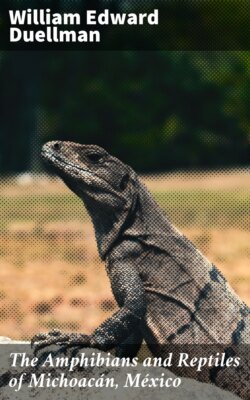Читать книгу The Amphibians and Reptiles of Michoacán, México - William Edward Duellman - Страница 10
На сайте Литреса книга снята с продажи.
GEOGRAPHY OF THE HERPETOFAUNA
ОглавлениеTable of Contents
Although the main part of my final report on the herpetofauna of Michoacán will deal with the geographical and ecological patterns of distribution of the herpetofauna, a brief summary of the faunal assemblages is presented here.
In Michoacán there are two major faunal assemblages, one in the lowlands, and one in the highlands. A large number of the species inhabiting the lowlands are wide-ranging species, such as Bufo marinus, Iguana iguana, and Boa constrictor. Sixty-three species are known to occur on the Pacific Coastal Plain; 41 of these, together with 36 others occur in the Balsas-Tepalcatepec Basin, a physiographic region to which several species of reptiles are endemic; for example, Enyaliosaurus clarki, Urosaurus gadowi, Cnemidophorus calidipes, and Eumeces altamirani.
Generally speaking, the members of the highland faunal assemblage have more restricted geographic ranges. The major exceptions are those species that are widely distributed on the Mexican Plateau, such as: Bufo compactilis, Sceloporus torquatus, and Salvadora bairdi. In the montane habitats of the Cordillera Volcánica, 45 species of amphibians and reptiles are known; 34 species have been found in the Sierra de Coalcomán. Fourteen species are known to occur in both ranges. Several species are known only from the Cordillera Volcánica and adjacent highlands, and three species are endemic to the Sierra de Coalcomán.
